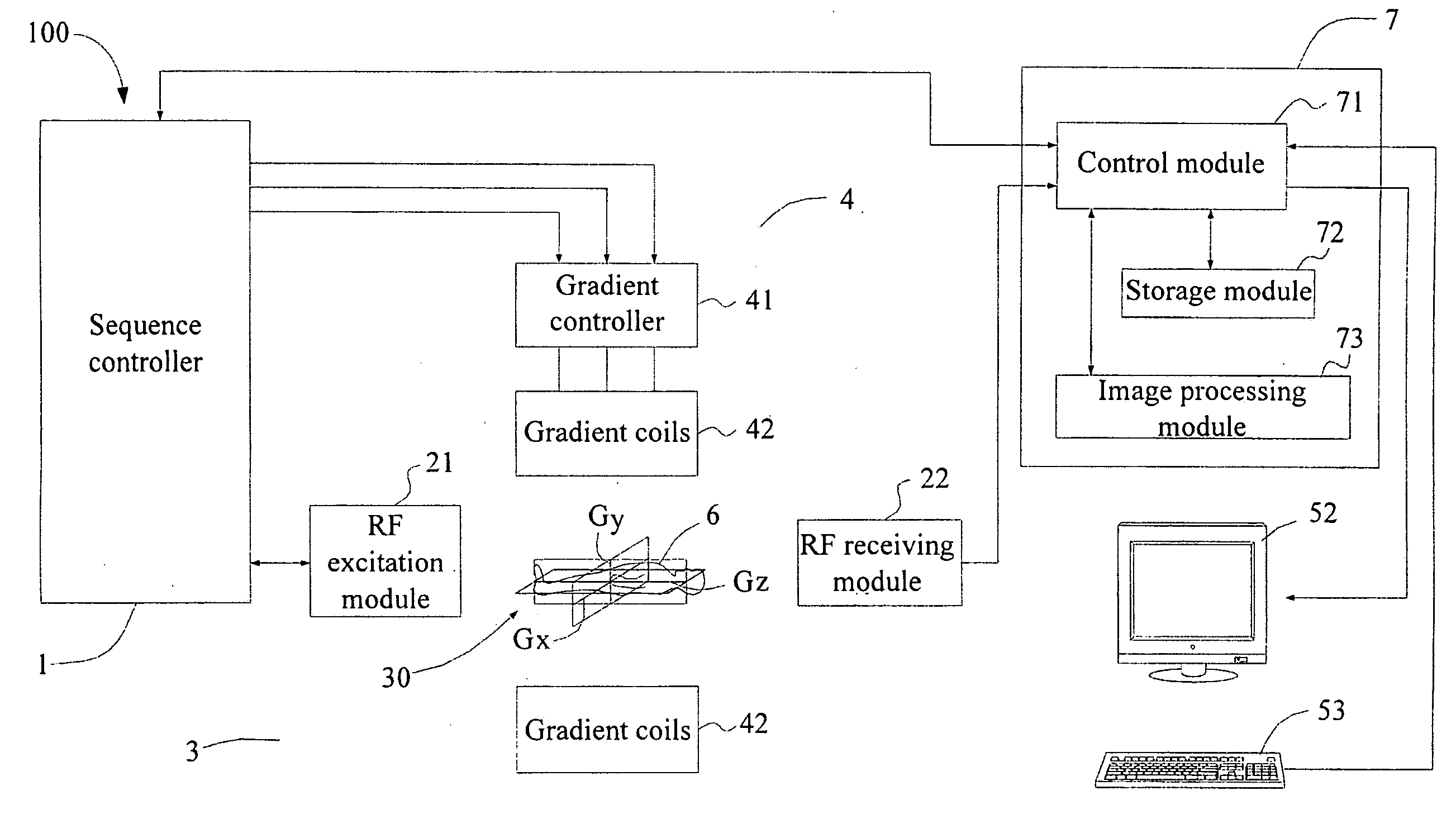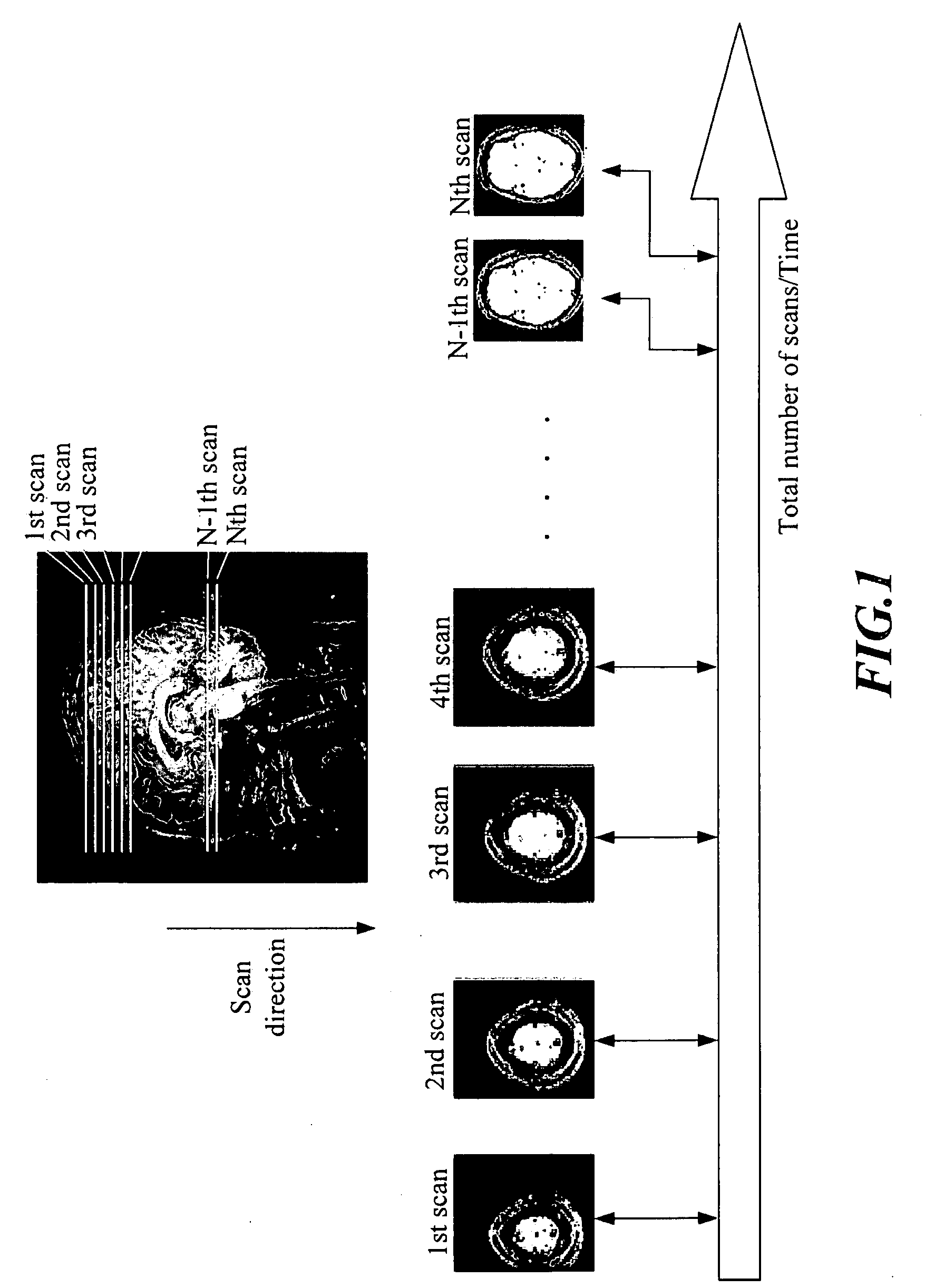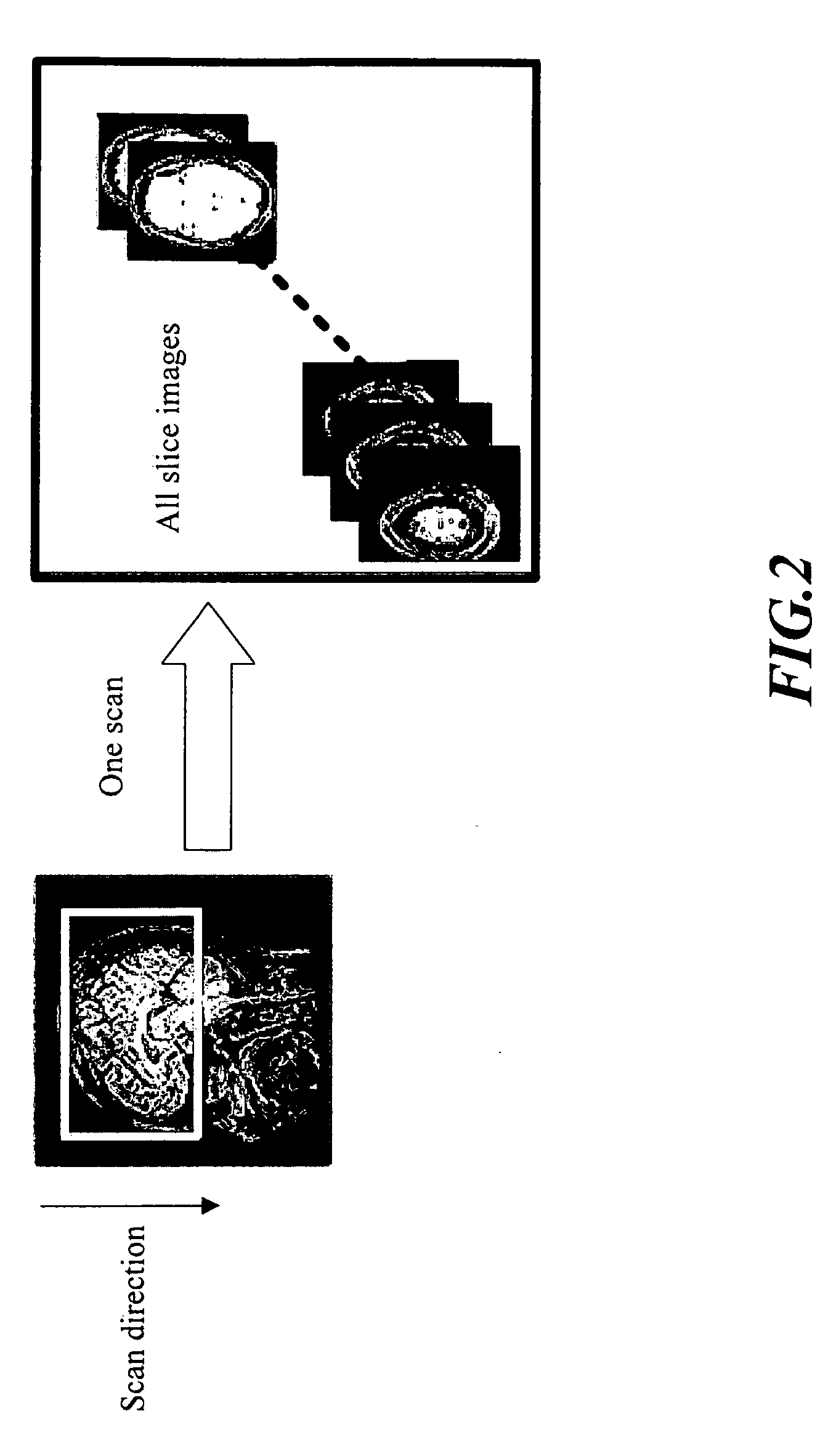Method and apparatus for simultaneously acquiring multiple slices/slabs in magnetic resonance system
a magnetic resonance and simultaneous acquisition technology, applied in the field of mr system, can solve the problems of time-consuming procedure, inability to compute, and inability to acquire 3d mr image in the same tim
- Summary
- Abstract
- Description
- Claims
- Application Information
AI Technical Summary
Benefits of technology
Problems solved by technology
Method used
Image
Examples
Embodiment Construction
.”
BRIEF DESCRIPTION OF THE DRAWINGS
[0026]Features, aspects, and embodiments are described in conjunction with the attached drawings, in which:
[0027]FIG. 1 is a schematic diagram, showing that, in a conventional procedure of 2D spatial encoding, only one single slice of the subject can be processed at a time and N images are given at N scans.
[0028]FIG. 2 is a schematic diagram, showing that, in a conventional procedure of 3D spatial encoding, only one single slab of the subject can be excited to give N images.
[0029]FIG. 3 is a block diagram illustrating an example of the inventive apparatus for simultaneously acquiring multi-slice MRI signals, wherein the apparatus is capable of imaging in accordance with one embodiment.
[0030]FIG. 4 is a flow chart illustrating an example method for simultaneously acquiring multi-slice MRI signals, wherein the apparatus is capable of imaging in accordance with one embodiment.
[0031]FIG. 5 is a flow chart illustrating an example method for simultaneous...
PUM
 Login to View More
Login to View More Abstract
Description
Claims
Application Information
 Login to View More
Login to View More - R&D
- Intellectual Property
- Life Sciences
- Materials
- Tech Scout
- Unparalleled Data Quality
- Higher Quality Content
- 60% Fewer Hallucinations
Browse by: Latest US Patents, China's latest patents, Technical Efficacy Thesaurus, Application Domain, Technology Topic, Popular Technical Reports.
© 2025 PatSnap. All rights reserved.Legal|Privacy policy|Modern Slavery Act Transparency Statement|Sitemap|About US| Contact US: help@patsnap.com



